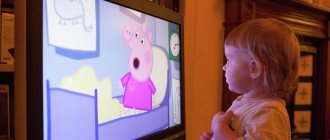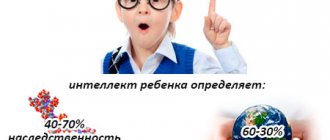Risk factors
Development problems
Typically, poor posture occurs during periods of rapid growth: at 5-8, and especially at 11-12 years. This is the time when bones and muscles increase in length, and the mechanisms for maintaining posture have not yet adapted to the changes that have occurred. Deviations are observed in the majority of children aged 7-8 years (56-82% of primary schoolchildren).
There are many factors that cause spinal curvature. For example, poor nutrition and illness often disrupt the proper growth and development of muscle, bone and cartilage tissue, which negatively affects the formation of posture. An important factor is congenital pathologies of the musculoskeletal system. For example, with bilateral congenital dislocation of the hip joints, an increase in lumbar curve may be observed.
An important role in the formation of deviations is played by the uneven development of certain muscle groups, especially against the background of general muscle weakness. For example, shoulders that are pulled forward are the result of predominant strength in the pectoral muscles and insufficient strength in the muscles that bring the shoulder blades together, and “dropping shoulders” are the result of insufficient work of the trapezius muscle of the back. An important role is played by overload of certain muscles with unilateral work, for example, incorrect position of the torso during games or activities.
All these reasons lead to an increase or decrease in the existing physiological curves of the spine. As a result, the position of the shoulders and shoulder blades changes, resulting in an asymmetrical position of the body. Incorrect posture gradually becomes habitual and can become fixed.
Incorrect posture
Sitting position. You should definitely pay attention to how the child sits at the table during classes: whether he puts one leg under him. Perhaps he is slouching or leaning to one side, leaning on the elbow of his bent arm.
Incorrect body position when sitting includes a seat in which the body is turned, tilted to the side or strongly bent forward. The reason for this situation may be that the chair is far away from the table or the table itself is too low. Or maybe the book the baby is looking at lies too far from him.
An asymmetrical position of the shoulder girdle can be formed as a result of the habit of sitting with the right shoulder raised high. Take a closer look: perhaps the table at which the child is studying is too high for him, and his left arm hangs down instead of lying on the tabletop (the same can happen if the table is round).
Standing position. The habit of standing with your leg set to the side and half-bent, like a crooked landing, develops an asymmetrical body position. This can aggravate lateral curvature of the spine caused by other reasons (for example, underdevelopment of the lumbosacral spine).
Physical inactivity...
Another important factor in the occurrence of postural disorders in children should be considered the notorious lifestyle. As sad as it may be, modern children have begun to move less. Starting from the age of 3, many children are sent to early development groups (primarily mental), then the process of acquiring knowledge increases, and during classes the child is forced to sit for a long time. In addition, children are introduced early to watching TV and video products; they can sit for hours playing computer games, and on the street, meeting with friends, instead of outdoor games, they enthusiastically discuss the features and codes of this or that electronic “shooter”. What can you do, if you want to be modern, follow the modern trends of life. However, a person must develop harmoniously, physical development should not lag behind. The weakness of the muscular corset in our children is primarily due to the lack of adequate physical activity, while with rapid growth, the strength of the abdominal and back muscles is simply necessary.
Face building exercises for the face
Face-building exercises for the face are a whole complex that allows you to develop the facial muscles. The fact is that we have more than 40 types of muscle tissue on our faces. And not all of them receive the proper workload. As a rule, the jaw is the most developed in humans. Several other types of muscles work normally next to it, but the rest do not receive any load at all. Therefore, over time, wrinkles appear, the skin begins to sag and lose shape.
How to identify weak facial muscles
If you don’t know how to identify weak facial muscles, then we will tell you now. There is a little secret that allows you to recognize a person just by looking at him. You probably know that there is such a science as physiognomy. So, with its help, psychologists determine a person’s character, predisposition to any diseases, moods, thoughts. This science focuses primarily on the muscles of the face, since they are capable of conveying emotions with millimeter precision.
The thing is that there are certain points that you should pay attention to. They are called muscle clamps, and it is by them that you can determine whether everything is okay with a person. But the problem with muscle tension is that they practically do not erase from the face and remain like a tattoo. But you know that any tattoo can be removed, and in this case, facial exercises will help get rid of this problem. If you want to know the basic muscle clamps, here they are:
- Furrowed brows. If a person is in a bad mood, or positions himself as too serious, then he gets such a tightness on his face. Small expression wrinkles remain on his face, and they can only be removed with the help of plastic surgery, or with the help of facial exercises.
- Pursed lips also indicate tension and create wrinkles in the lower part, closer to the chin. In old age, your lips will droop, and you will have a dissatisfied expression on your face for the rest of your life.
- Squinted eyes also cause strong muscle tension, which is why wrinkles appear around the eyes. This is the most popular clamp that can be seen in almost every woman over 30 years old.
There are a lot of other points and clamps, but you didn’t come to read a course on physiognomy. The most important thing is that face-building exercises for the face will help you get rid of them, make your face relaxed, beautiful and young.
Signs of facial aging
The signs of facial aging are not visible to everyone, but if you are aware of them, you can save yourself from sagging skin in this area. Pay attention to them and get great results.
- Low eyebrows. If your eyebrows begin to droop, this is the first sign of facial aging. This suggests that the muscles around the eyes begin to quickly age and weaken. As a rule, it will take less than a year for the tone to significantly decrease. Therefore, you should react as soon as you notice a problem. Of course, facial exercises may prevent this. But look in the mirror, there may already be a problem.
- Sagging lower eyelids. This also indicates relaxed facial muscles, but the problem is that it is very difficult to reach them. But, nevertheless, nothing is impossible, it’s enough to just take care of yourself.
- Sagging cheeks also indicate that facial aging is in full swing.
- As you age, a double chin appears and the skin in this area begins to sag. This sign is visible almost immediately, but you shouldn’t trigger it, you need to start fighting right away.
- What do you think reveals a woman's age? And his neck gives him away, because no amount of plastic surgery will help or remove wrinkles and sagging skin on the neck. No surgeon will undertake to operate on this place, since one awkward movement and the person can be seriously injured. Therefore, if the neck begins to wrinkle, then this is a sign of facial aging.
Pay attention to these signs, attack them in time with exercises, and your appearance will be at its best.
Recognize in time
In order to notice the deviation in time, parents need to more often pay attention to the position of the baby’s shoulders and back. His shoulders and shoulder blades should be at the same level. The correct position of the spine is also important - whether it is curved to the right or left, whether the subgluteal folds are located at the same level. These signs of lateral curvature can be seen by examining the child from the back while he is standing. When viewed from the front, it should be noted whether the collarbones and nipples are at the same level.
By looking at the side, you can identify disorders such as stooping or sluggish posture. This can be done by eye or using a special test. The child stands with his back to the wall so that the back of the head, shoulder blades, buttocks, and legs are in contact with the wall, and then takes a step forward, trying to maintain the correct body position. (This same test can be used as an exercise to develop good posture.)
If a curvature is detected, it is necessary to examine the baby's back, placing him on a flat, hard surface face down, arms along the body. If the curvature of the spinal column does not persist in the lying position, then we are only talking about a violation of posture, which can be corrected.
Muscle test . There are several simple tests to determine the state of the child’s muscular system. To do this, assess the baby’s ability to tense his back muscles for a long time. The child is placed face down on the couch so that the part of the body above the hips is suspended outside the couch, and the hands are on the belt (the child’s legs are held by an adult). Normally, children 5-6 years old can maintain a horizontal position of the body for 30-60 seconds, children 7-10 years old - 1 - 1.5 minutes, 12-16 years old - from 1.5 to 2.5 minutes. The development of the abdominal muscles is determined by the number of continuous repetitions of the transition from a lying position to a sitting position and back (while fixing the legs) at a slow pace, no more than 16 times per minute. The norm for preschoolers is 10-15 times, for children 7-11 years old - from 15 to 20 times, for children 16-18 years old - from 20-30 times.
If postural abnormalities and (or) weakness of the muscular system are detected, the child should be consulted by an orthopedic surgeon, traumatologist or physical therapist. The doctor examines the child, and if necessary, additional research methods are performed: radiography, electromyography, etc.
Recently, a new research method has emerged - topographic photometry, which allows not only to diagnose disorders of the musculoskeletal system, but also to evaluate the effectiveness of the treatment. The method is based on photographing the patient’s posture after the doctor marks the main landmarks on the child’s back with a marker.
Loss of strength and weakness in the child. Causes, symptoms, treatment and prevention | Children's health
Chronic fatigue is called a disease of modern society. It’s sad that not only adults, but also children often experience a breakdown. A child experiencing unusual apathy and weakness should not be left without help. Such a symptom is evidence of an unfavorable physical or psychological state.
Causes of weakness and loss of strength in a child
If the loss of strength lasts for several days and can be easily explained by a history of acute respiratory viral infection or preparation for exams, parents just need to wait a little, and gradually everything will return to normal.
When lethargy and apathy last more than a week and are accompanied by other symptoms, urgent consultation with a specialist is required.
Factors that provoke weakness, fatigue and drowsiness include:
- Wrong lifestyle in the family. Modern children exercise catastrophically little, go to bed late and get up early. Lack of physical activity and sleep leads to decreased muscle tone, physical inactivity, deterioration of blood supply and the condition of the body as a whole.
- Lack of valuable nutrients. Loss of strength is most often associated with anemia - low hemoglobin in the blood. Weakness can also be caused by the lack of foods in the diet that contain vitamins B12 and B6, folic acid, copper, zinc, and iron. Deficiency of iodine and protein negatively affects the general condition.
- Constant stress and mental overload. Frequent conflicts, alcoholism of parents, increased stress at school lead to exhaustion of the nervous system. Highly sensitive children find it difficult to tolerate what their parents consider insignificant quarrels, as well as rude speech, ridicule, dissatisfaction, and criticism.
- Chronic and infectious diseases. The list of diseases that cause weakness is wide: these include problems with the cardiovascular and endocrine systems, liver diseases, the presence of helminths, infections, etc.
- Transitional age . In some adolescents, hormonal changes in the body lead to emotional instability, including apathy, depression, and rapid growth worsens physical condition.
Symptoms of weakness and loss of strength in children
If adults also experience constant fatigue and apathy, it may be due to the wrong regime in the family. It is difficult for a child to be cheerful and active if he spends his leisure time near the TV or computer and sleeps 6-7 hours a day. The baby grows lethargic and weak if he eats processed food, fast food, and there are no fresh greens, vegetables and fruits in the diet.
You can detect stress by observing your son or daughter and noticing a sharp change in behavior. Usually the child either goes deep into his own experiences, remains distant, stops communicating with friends, or becomes impudent and aggressive.
Psychological problems leading to loss of strength are typical for children who are often punished, overloaded with additional activities, or those who are bullied or bullied in a group.
An aggressive environment is formed everywhere: in the family, school, even in preschool educational institutions.
Weakness caused by the disease is usually accompanied by other symptoms: fever , pain, shortness of breath, nausea , etc. An infectious disease specialist, endocrinologist, or cardiologist will help identify the cause. The first thing to do is to consult a pediatrician who has been monitoring the baby from the first days of life. If necessary, he will give a referral to a specialist.
A small patient suffering from loss of strength is prescribed a laboratory examination: a general blood test, urine test, ECG and ultrasound of internal organs. A blood test also determines the lack of vitamins and minerals in the body.
Important! It is generally accepted that cardiograms and blood pressure measurements are only necessary in adults. In order to promptly identify pathology in a baby, experts recommend having an ECG every two years , and measuring blood pressure twice a year.
Treatment of loss of strength in a child
It is the doctor’s task to select treatment in case of health problems. Parents need to follow all instructions, protect children from overload and ensure the required regime.
The workload should be reconsidered if weakness is caused by fatigue from studying and extracurricular activities. Sensitive children need to create a calm environment in the family and provide support in case of conflict with the teacher or classmates. If the atmosphere of bullying is unbearable for a student, it is better to think about changing institutions.
Important! Self-treatment with herbal decoctions, prescribing vitamin complexes, immunomodulators and other medications is strictly not recommended. The consequences can be different: from an allergy to the components of the product to the transition of the disease to an advanced stage.
Children at risk
Anyone can get tired from stress, but there are categories of quickly exhausted children who require special attention. These include:
- Premature babies. It is more difficult for them to cope with any illnesses than for ordinary children.
- Children attending kindergarten and school for the first time. Joining a new team is stressful, as is high workload.
- Teenagers.
- Sensitive, emotional children.
- Children with disabilities.
- Schoolchildren during exam period.
Fact! By the end of the first quarter, up to 60% of schoolchildren lose weight. It is not surprising that many of them experience a breakdown.
Prevention of loss of strength and weakness in children
Parents who want to improve their child’s health often send them to sports clubs. Before doing this, it is necessary to exclude pathologies of the cardiovascular system, otherwise the child may be harmed. It’s better to start with gradually increasing physical activity, hardening and an optimal daily routine.
You also need to protect from psycho-emotional stress: give your son or daughter time in peace and quiet, create trusting relationships between all family members. Optimism, care and support from adults will help a little person survive temporary troubles.
Attention! The use of any medications and dietary supplements, as well as the use of any therapeutic methods, is possible only with the permission of a doctor.
Source: https://vse-pro-detstvo.ru/zdorove_detey/upadok-sil-i-slabost-u-rebenka-prichinyi-simptomyi-lechenie-i-profilaktika
An approximate set of exercises to strengthen the back and abdominal muscles
(can be performed from 4-5 years old until adolescence)
- Starting position: standing, hands on your belt. Spread your elbows, squeezing your shoulder blades together—inhale; return to IP - exhale.
- Starting position: standing, legs apart, hands to shoulders. Lean your body forward with your back straight - exhale; return etc. - inhale.
- Starting position: standing with a gymnastic stick in your hands. Raise the stick forward up - exhale; return to IP - inhale.
- Starting position - standing, stick in lowered hands. Sit down with your arms stretched forward; return to IP The back is straight.
- Starting position: standing, stick on shoulder blades. Lean forward with your arms stretched up (take out the stick); return to IP
- Starting position - lying on your back on an inclined plane, holding the bar of the gymnastic wall with your hands. Bend your legs, pull them towards your stomach - exhale; straighten - inhale.
- Starting position: lying on your back, arms along your body. Bicycle leg movements.
- Starting position: lying on your back, arms to the sides. Stretch your arms forward, lift your left leg and touch your arm, then your right leg. Accept i.p.
- Starting position: lying on your stomach, arms to the side. Raise your body, bending your thoracic spine (reach towards the ceiling); return to IP
- Starting position: lying on your stomach, hands on your belt. Raise your body up and raise your right leg - inhale, return to the i.p. - exhale. Repeat the exercise, raising your left leg straight.
- Starting position - lying on your stomach, arms bent at the elbow joints, holding a gymnastic stick on your shoulder blades. Raise your body by bending it through a gymnastic stick; return to IP Breathing is voluntary.
A set of exercises is performed daily in the morning or evening, depending on the child’s peak activity, but not earlier than an hour after a meal or 30-60 minutes before it. The pace is slow, you should start with 5 repetitions, increase to 10, the whole complex takes 30-40 minutes.
In order for the exercises to have a sufficiently accurate effect, they must be performed intensively, that is, above the children’s normal level of ability. First, easier exercises are given with a gradual transition to more difficult ones. Throughout the lesson, pauses are made several times to rest. It is recommended to rest in a lying position:
- lying on your back, legs slightly pulled up to your stomach, hands behind your head;
- lying on your stomach, your chin resting on your hands.
Oleg Malakhov Professor, Head of the Department of Pediatric Orthopedics at the Central Institute of Traumatology and Orthopedics named after. N. N. Priorova, MD Mikhail Tsykunov Professor, Head of the Department of Rehabilitation, CITO named after. N. N. Priorova, MD Svetlana Fedorova, rehabilitation specialist, employee of the Department of Rehabilitation, CITO named after. N. N. Priorova










